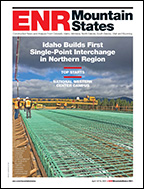
The 2009 American Recovery and Reinvestment Act provided $8 billion for high-speed passenger rail and regular appropriations provided about $2 billion more. It’s been up to the Federal Railroad Administration to set up the program, evaluate a flood of applications for the money and award grants. But before design and construction work can get going, FRA must negotiate and sign agreements with states and freight railroads, on whose lines many of the proposed projects are located. Only then can the money be formally obligated.
Since July, there has been a burst of FRA high-speed rail obligations, totaling more than $2 billion. That clears the way for design and construction contracts to proceed.
To get FRA’s views on these developments, ENR spoke with Deputy Administrator Karen Rae, who has been deeply involved in the high-speed rail program nearly from its beginning and has been a key player in moving the process forward.
For about 30 years, Rae has held senior public-sector transportation posts. She joined FRA in 2009 from the New York State Dept. of Transportation, where she was deputy commissioner of policy and planning. Before that, she was Pennsylvania DOT’s deputy secretary for local and area transportation and earlier was director or general manager of public-transit systems in Austin, Texas; and Glens Falls and Buffalo, N.Y.
Edited excerpts of the Oct. 4 telephone interview follow:
ENR: Why this burst of obligation activity over the past couple of months?
Rae: You’re right to notice that we’re continuing to move funds out…. The number that’s in my head is $2.1 billion since early July….
Three years ago, this program didn’t even exist. So we spent the first year of our being, kind of creating the base on the program and getting the first awards out. Then we had a second round of awards and then we had a third round of awards…. We’ve always been focused on trying to get as many projects into good agreements that can get us into the next construction cycle.
In this case in particular we had a couple of very big [projects] that went through over the summer as well as a large number of smaller and medium-sized ones, because we finally began to create some templates for the PE, NEPA and the state rail plans so that we would not have to do each one individually, we kind of found a way of systematically advancing those.
[Major projects whose funds were obligated this summer include $449 million to Amtrak for Northeast Corridor improvements, $295 million to New York to ease the bottleneck at the Harold Interlocking in Queens, and $158 million for improvements in upstate New York, between Poughkeepsie and Schenectady.]



Post a comment to this article
Report Abusive Comment